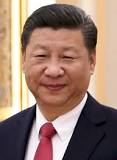China’s factory and retail sectors slumped in August with output and sales growth hitting one-year lows as new COVID-19 variant adversely affected supply of goods and service, thereby undermining the government’s economic recovery drive.
Industrial production rose 5.3 per cent in August from a year earlier, dropping marginally from an increase of 6.4 percent recorded in July and marking the weakest pace since July 2020.
According to data by the National Bureau of Statistics released on Wednesday, the country’s output growth missed the 5.8 percent increase forecast by analysts.
Further analysis of the data showed that consumer spending also declined following rising local COVID-19 cases and floods with sales rising only 2.5 per cent in August when compared to the growth recorded in the corresponding month of 2020, much lower than the 7.0 per cent rise forecast by analysts.
Commenting on the latest figures of the National Bureau of Statistics, an analyst and Head of Asia Economics at Oxford Economics, Louis Kuijs, said: “Economic growth slowed in August as consumption was hit by the lingering impact of earlier COVID outbreaks and investment remained weak.
“Meanwhile, a new outbreak which started a few days ago in Fujian is posing downside risk to our forecast of a pickup in growth in Q4 after a weak Q3”, the economist added.
According to the Bureau’s data for the month in review, industrial production curbs hit output of aluminum and steel, even as a drastic cut in fuel export quotas also adversely affected China’s crude oil production and sales.
In addition, the report reflected that social restrictions due to the COVID-19 Delta variant in several provinces also undermined the productivity in the catering, transportation, accommodation and entertainment industries.
This is even as a private survey revealed that the country’s services activity contracted in the month under review as restrictions to curb COVID-19 once again closed shopping malls and many businesses in parts of the country.
Analysts expect the sluggish trend of China’s industrial output to extend into September given the new wave of Delta cases in Fujian province and worsening conditions in the property market as authorities get tough on the sector. They also expect China to quicken spending on infrastructure projects later this year.
In recent months, China has made a remarkably strong recovery from last year’s COVID-19 triggered slump, but the economy’s trajectory has slowed over the past few months due to supply chain bottlenecks, semiconductor shortages, curbs on high-polluting industries and a crackdown on property investment.






